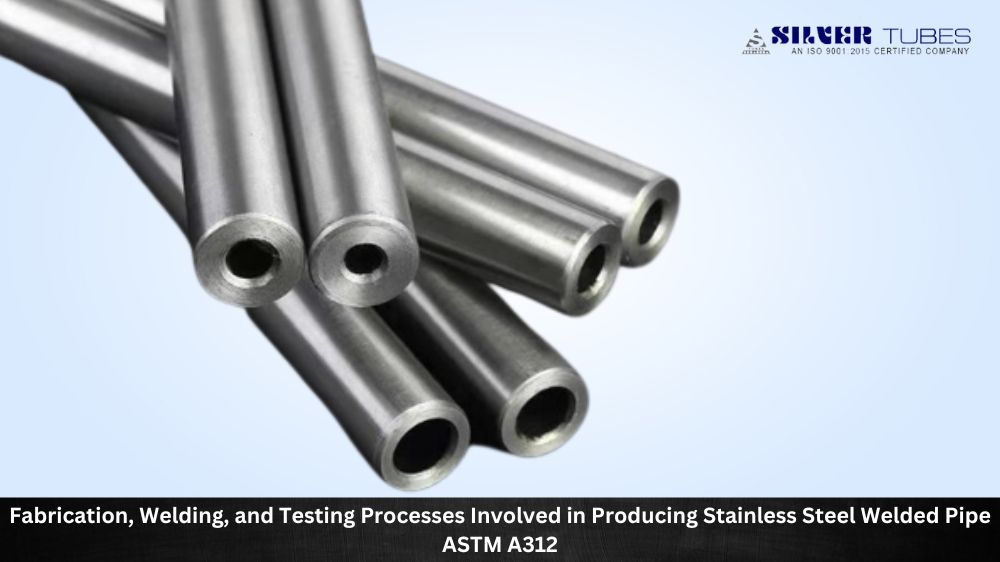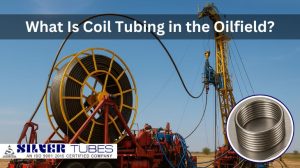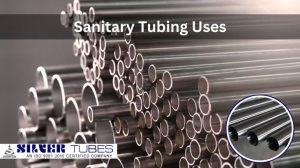Stainless steel is the go-to material for industrial and commercial applications due to its unrivaled corrosion resistance, durability, and aesthetic appeal. Welded Stainless Steel pipes, in particular, are highly sought after for use in applications that require high-pressure or heating capabilities. But have you ever wondered how they are made? This blog post delves into the fabrication, welding, and testing processes involved in producing Stainless Steel Welded Pipe ASTM A312.
What is Stainless Steel Welded Pipe ASTM A312?
Stainless Steel Welded Pipe ASTM A312 is a type of pipe that consists of long continuous welded seams. It is produced in various stainless steel alloys, such as 304, 316, and 317L. Due to its corrosion-resistant properties, this type of pipe is commonly used for applications including water, oil, and gas processing pipelines, pressure vessel fabrication, shipbuilding, and heat exchanger systems. Other benefits include a high strength-to-weight ratio, smooth surface finish, and good ductility for bending purposes.
Processes Involved in Producing Stainless Steel Welded Pipe ASTM A312
Fabrication Processes
Fabrication is the first step in the production of stainless steel welded pipes. The process involves sourcing high-quality stainless steel materials and designing the pipe using computer-aided design technology. After the design, the stainless steel is cut to size, bent into shape, and welded together. This process ensures that the final product is safe, sturdy, and suitable for various applications.
Welding Processes
Welding is an essential process used to join pieces of stainless steel together. The welding process used in the production of welded pipes is Tungsten Inert Gas (TIG) welding. TIG welding uses a non-consumable tungsten electrode and a shielding gas to create a weld without using filler material. This produces cleaner, stronger, and more precise welds than other welding processes, such as MIG welding.
Testing Processes
Testing is The final process of producing Stainless Steel Welded Pipe ASTM A312. The pipe’s quality and safety are tested using various methods, including hydrostatic testing, ultrasonic testing, and eddy current testing. Hydrostatic testing involves subjecting the pipe to high-pressure water to determine if it can withstand the required pressure for its intended application. Ultrasonic testing uses high-frequency sound waves to examine the weld for any defects. Eddy current testing uses electromagnetic induction to detect defects in the weld’s conductivity.
Finishing Processes
After testing and inspection, the Stainless Steel Welded Pipe ASTM A312 undergoes a finishing process to give it its desirable appearance and improve its corrosion resistance. The finishing process involves polishing the surface using various abrasive materials to remove any surface imperfections, removing any remaining impurities, and final cleaning. Depending on the application, the pipe’s surface can be treated with a special coating to increase lifespan.
Benefits of Stainless Steel Welded Pipe ASTM A312
Stainless Steel Welded Pipe ASTM A312 has numerous advantages over other materials like PVC and copper. It is durable, corrosion-resistant, and has a long lifespan, even under harsh conditions. Welded stainless steel pipes are easy to clean and sterilize, making them ideal for use in the food and beverage industry. They also have excellent heat resistance properties, making them suitable for high-pressure applications like oil and gas.
Conclusion:
Producing Stainless Steel Welded Pipe ASTM A312 is a complex process that involves various fabrication, welding, testing, and finishing processes. The resulting product is a durable and corrosion-resistant pipe with numerous industrial applications. The quality and safety of the pipe are ensured through rigorous testing and inspection processes, making it a reliable and safe choice for high-pressure and high-temperature applications. Now, armed with this knowledge, you can appreciate the effort of producing welded stainless steel pipes and the benefits of using them in various industries.






